As I sip a Gypsy Queen at Carmel’s Cypress Inn, I think about getting tossed and turned, hours earlier, by the crisp and nearly onshore emerald waves down the hill from this hotel once owned by Doris Day. I look up at the five framed CDs presented to Terry Melcher, Day’s son, by the Recording Industry Association of America for 500,000 sales of “Good Vibrations, 30 Years Of The Beach Boys,” hanging above.
I wonder how exactly it is that I ended up here—a Canadian expat working for a Central California newspaper. And, as the Beach Boys’ return to San Jose this weekend at Music in the Park draws near—with Los Gatos-bred John Wedemeyer leading the guitar lineup—my mind wanders to the role this four-piece from Hawthorne, California, may have played in my arrival in the Golden State. And I can’t help considering the band’s role in shaping the development of surf culture—or at least the place it occupies in the popular imagination.
Somehow I’d forgotten about the weekend nights when my dad would put on a Beach Boys greatest hits cassette, and I would run ’round, ’round the living room to “I Get Around.” My mom called it getting “rambunctious.” I didn’t exactly understand what the lyrics were all about. And I didn’t really care. The music awoke something inside, a sense that musical frequencies could be something to which you could devote your being.
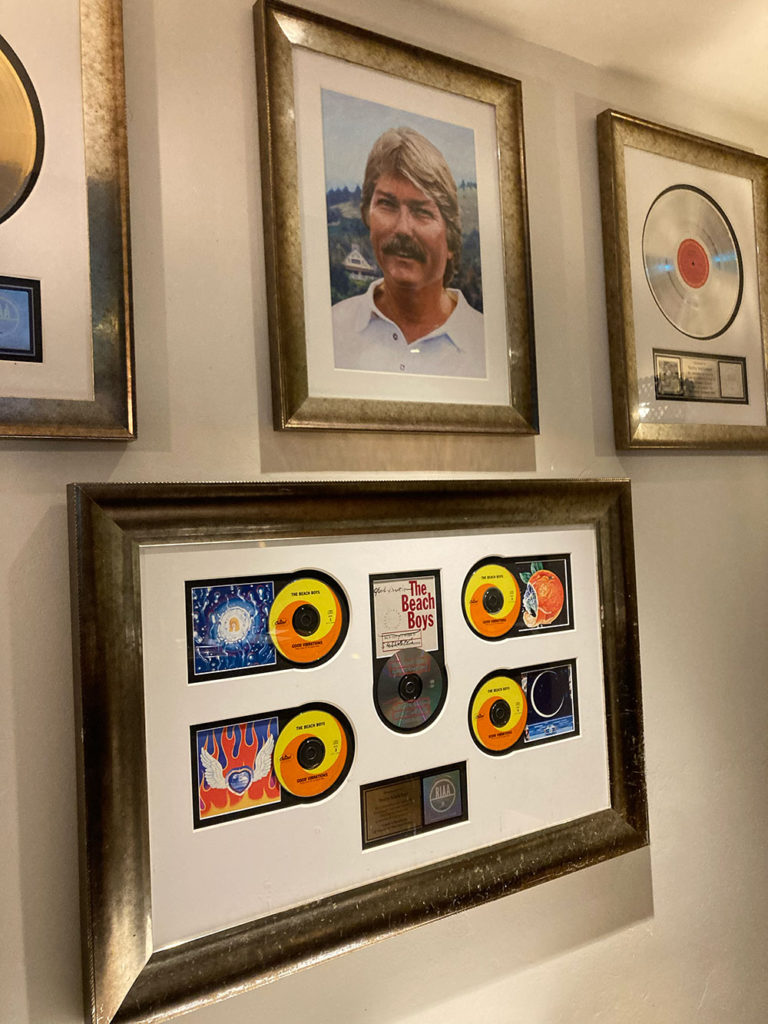
I understood the Beach Boys to be emissaries of a sunny Californian culture that seemed appealing to someone accustomed to windows iced shut all winter. In Canadian “lake country,” the idea of surfing seemed more distant than a Caribbean vacation. Even then, I had the sense that this was a reflection of a moment in American history that had already passed, and transformed into something else. The broken beats in the Beach Boys’ drum machine-laden collaboration with hip hop trio the Fat Boys on the 1987 “Wipe Out” single brought the myth to a new generation.
BIRTH OF SURF CULTURE
Nowadays, you’re more likely to hear hip-hop music blaring from vehicle stereos in the beach communities of Southern California. But as I drove home to Santa Cruz, KZSC 88.1FM was playing “Cherish” by the Association. The still-full moon beamed milky light past towering palms, as I arrived, and I saw one of my roommates in passing. He came to California from the Midwest in 1976 and remembers cruising around LA to the sounds of Wolfman Jack on the airwaves. I asked him about hearing the Beach Boys as a kid. “It was a whole culture,” he said. “It basically made California—and it was fun, too.”
The previous weekend I’d driven down to Los Angeles for the California Journalism Awards dinner and headed to Torrance Beach, near where I lived during the pandemic. I wanted to see if there were any rideable waves. There weren’t. In my favorite nearby coffee shop, I was approached by a 77-year-old man named Richard Kelsey, and we struck up a conversation. Kelsey has been living in Seattle, but he grew up in Torrance. His family moved there in the ’50s.
“Hermosa Beach was kind of Ground Zero for the beach culture,” he said. “Surf music came, and it was just a new type of music—and everybody liked it.”
His father surfed a wooden board. Kelsey followed in his dad’s oceanic footsteps.
However, the hardcore surfers didn’t exactly buy into the Beach Boys schtick at the time, he recalled. He didn’t think much of the act at first, either. Although, one day that changed. “They came to Torrance High School,” he said. “It was a big local thing.”
Kelsey was quite impressed with their performance.
“They certainly didn’t embarrass themselves at all,” he said. “They were great.”
Kelsey hadn’t been back to Torrance in half a century. And now, upon his return, what struck him most was how little things had changed. “It was surprising,” he said. “There’s way more money here, of course. It’s a trillion times more expensive.”
And he credits the Beach Boys—and their ilk—with helping shape the place.
“It put the beach communities—especially in LA—on the map, for sure,” he said. “Nevertheless, those things kind of come and go.”
THE MOTHER SPORT
Back in Santa Cruz, the place with arguably the most vibrant surf scene, you can’t throw a stone without hitting someone who played a role in growing the wave-based pastime. It’s as good a place as any to gauge the Beach Boys’ impact on beach culture.
Randy French, who founded sailboard manufacturer Seatrend in Santa Cruz in 1976, and then later Surftech, used to ship 80% of his boards to SoCal. He says the Beach Boys didn’t appeal to the older generation of surfers, who preferred instead the sounds of jazz and blues. Those guys, he explained, felt like the group was capitalizing on a culture they didn’t have much to do with. “My generation,” he added, “we liked the Beach Boys.”
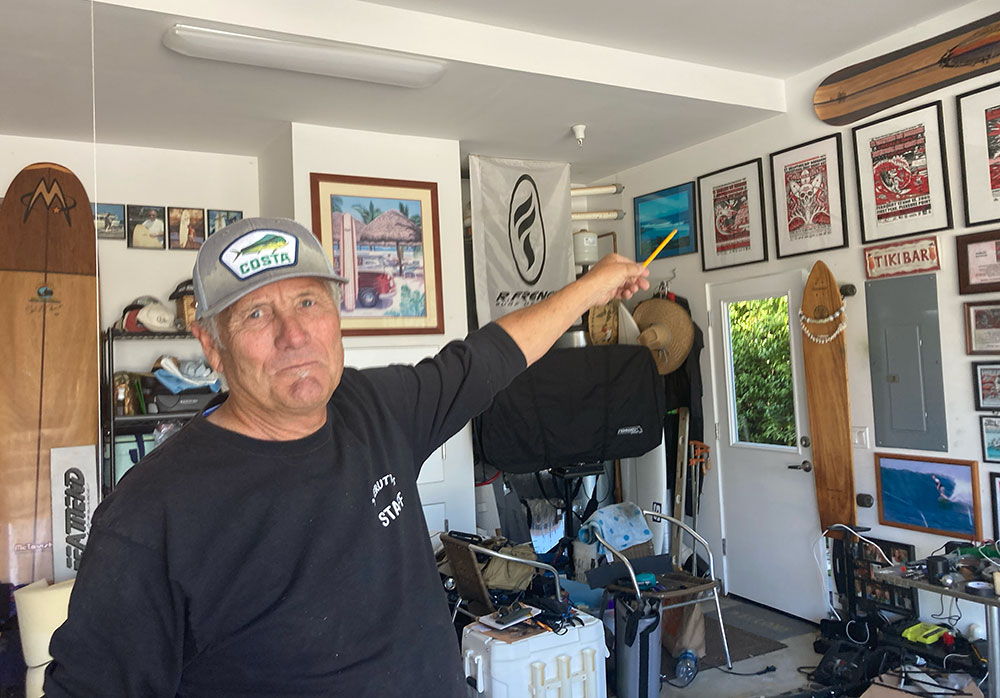
French was close with the stuntmen for the film Big Wednesday. And he ended up making surfboards with Robert August, star of the 1966 documentary The Endless Summer.
“Surfing is the mother sport of all the satellite sports—skateboarding, windsurfing, snowboarding, kiteboarding,” French said. “All of that emanated from surfing.”
French, who at one point was sponsored by O’Neill, would go on to sell boards in dozens of countries.
“Running surf companies is an art form,” he said. “The guys that made the money in the surf industry aren’t the guys that made boards.”
Another local with ties to the venerable O’Neill brand, which was founded in 1952, is 76-year-old Michael Yankaus, who was the art director there from 1985 to 1991.
Yankaus recalls owning a ’56 Mercury “Woodie Wagon” in the mid-’60s.
“It was considered to be the cool surf wagon,” he said.
He also remembers the artwork for Surfin’ Safari (1962), which featured the Beach Boys in a thatch-adorned ride on the sand at Paradise Cove in Malibu. “Their first album cover was really cool.”
Another influence was The Endless Summer movie poster, created by Surfer magazine art director John van Hamersveld. Yankaus even went to the film premiere in LA.
“It was packed,” he said.
Decades later, he would wander into a Santa Cruz paint shop and select a fluorescent orange hue to bring to O’Neill’s 1980s graphic design.
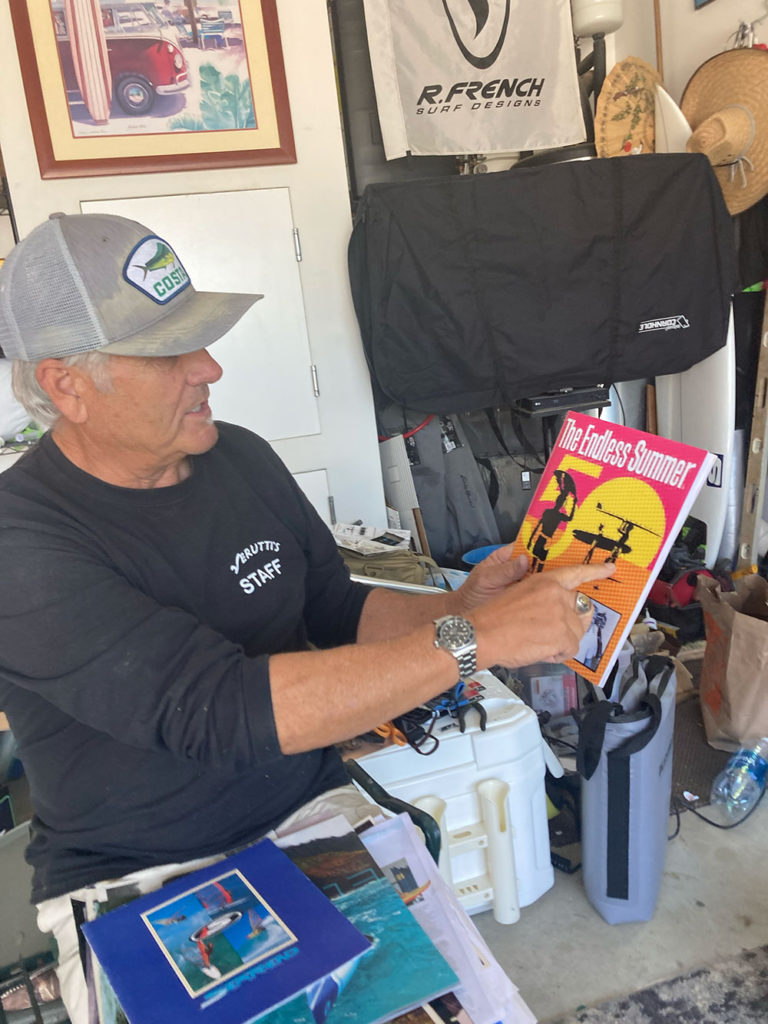
After the Beach Boys’ music was featured in the 1973 George Lucas film American Graffiti, Capitol Records released the hits collection The Beach Boys Endless Summer—which catapulted the group back to the top of the charts.
In a 1992 interview in Goldmine, co-founder Mike Love took credit for the name, stating the original concept was more generic.
“They were going to do a Best of The Beach Boys Volume Three,” he told the publication, adding while he loved the “vibe” of the record, he wasn’t a fan of the artwork. “It was awful.”
MUSIC AND MEDITATION
One day in 1984, in a Dutch airport on the way to a Transcendental Meditation assembly, Yankaus spotted Beach Boys lead singer Mike Love.
“He had just gotten his luggage; and I was just walking in to locate mine, and we crossed paths,” Yankaus said. “I said, ‘Hey, surf’s up!’”
They ended up rooming for the duration of the course.
“We did yoga together, meditated in a group with 5,000 other people,” he said. “And see, the Beach Boys were gigantic in Holland.”
Yankaus, a TM teacher, was impressed by Love’s friendliness and his respect for the practice, which they’d both learned (as did the Beatles) from Maharishi Mahesh Yogi.
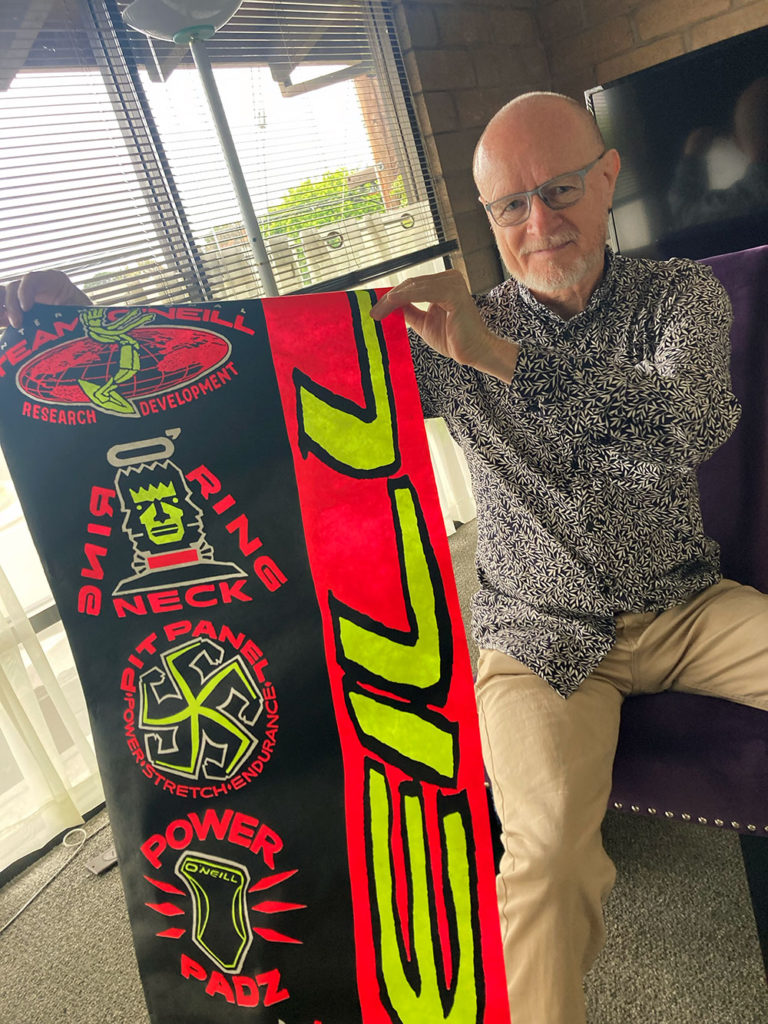
“He was just awesome,” Yankaus said. “He’s always been very supportive of the TM program, as Paul McCartney and Ringo are.”
Yankaus, the former director of the Silicon Valley Transcendental Meditation Center, sees plenty of similarities between music, meditation and surfing.
“Surfing is one of the best things that ever happened to me, and that’s why I still do it,” he said, during our interview at the second-floor TM space in Capitola. “Whatever was bothering you is gone after you catch a wave.”
The Beach Boys brought the guru on tour with them in 1968. Even though that effort ended in disappointment due to low ticket sales in the wake of the assassination of Martin Luther King, Jr., Love said he didn’t regret trying to spread the message of TM.
“I thought I could do some good for people who were lost, confused, or troubled, particularly those who were young and idealistic but also vulnerable,” Love said in his autobiography. “I thought that was true for a whole bunch of us.”
Yankaus says the group has been broadcasting upbeat messages to audiences since their earliest days.
“The Beach Boys really created a positive vibe in the youth in the United States,” he said. “They had their fingers on the pulse of what was happening.”
NORTH VS. SOUTH
I met Mark Gray, 75, in the Billabong store in the Pleasure Point neighborhood of Santa Cruz, where he explains surfboard and wetsuit technology to shoppers. Over the years he’s written for outlets like Surfer’s Path and Surfer, and helmed Surfer’s Japanese publication. He’s the product of parents who met on a ship to India in the ’40s. He was in his early teens when surf music popped off in 1962.
“That’s when I started surfing,” he said, recalling how he would hitchhike from Redwood City to Half Moon Bay to catch waves.
He remembers how the surf culture of Northern California had a slightly different flavor to the southern half of the state, given the colder climate and the influence of the beat poets from San Francisco’s North Beach—which ultimately morphed into the Grateful Dead–soundtracked hippie generation.
So, while the groups of SoCal would tend to play surf music exclusively, the NorCal bands would perform a mix of hits and surf rock, he explained.
He saw the Beach Boys wanting to ride that wave to mainstream success.
“They were trying to attach themselves to a trend,” he said. “But the ‘Pet Sounds’ album was really quite remarkable.”
THE NEXT WAVE
Unfortunately, as he sees it, it was the fact that surf music was intrinsically linked to the Pacific Ocean communities that spelled its downfall. While it surged for a while, pop audiences of America couldn’t always relate—though some groups, like the Beach Boys were later able to capitalize on nostalgia.
“It was really a music of the coast,” Gray said. “A lot of the surf music was primitive.”
He remembers going to a “surfers stomp” party in Santa Cruz on Seabright Beach, back when it was called Castle Beach (because of the castle-shaped bathhouse that was turned into the Casa del Mar restaurant).
Recently, there’s been a renewed interest in surf culture, particularly from the new wave of transplants to Silicon Valley who can now spend more time near the beach, due to pandemic-prompted work-from-home policies.
“They could live anywhere, because they had enough money, so they’d get an apartment where they could see the waves,” Gray said, noting some of them started to get good at surfing quite quickly. “A lot of them were trying to go from a longboard, to a mid-length, to a shortboard.”
With the early 2000s came the rise of “indie surf” and “Lo-Fi” music. Groups like the Growlers, Wavves, Best Coast, Beach Fossils and the Drums—who are musically indebted to the reverb-heavy sounds popularized by the Beach Boys, and others, back in the 1960s—began to provide the soundtrack to parties in beach towns and beyond. Meanwhile, Australian bands King Gizzard & the Lizard Wizard and Tame Impala have extended beachy rock’s contours in new directions.
“I think that surf music is still alive and well,” Gray said.
Drew Penner is the editor of the Los Gatan newspaper. He also hosts the Frequency Horizon electronic music and surf culture podcast, Fridays from 10-midnight on 92.9FM Pirate Cat Radio (kpcr.org).
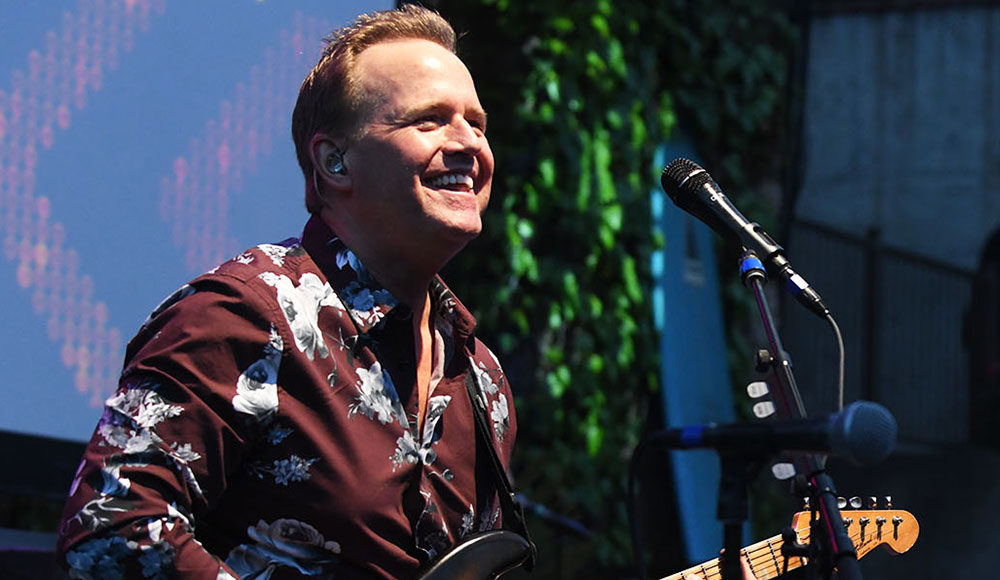



This is a great article, and I am honored to have been able to share my “Beach Boy” memories. Let me add one thing: what attracted Mike Love and I to Transcendental Meditation practice is that it is very similar to the effect of Surfing, that the BB’s expressed in their music — the experience of the deepest nature of one’s own inner Consciousness during TM is holistically relaxing and rejuvenating, and it spontaneously removes the stress of material concerns. It is spiritual, and so is surfing, and that is why Surfers are so Nature oriented.